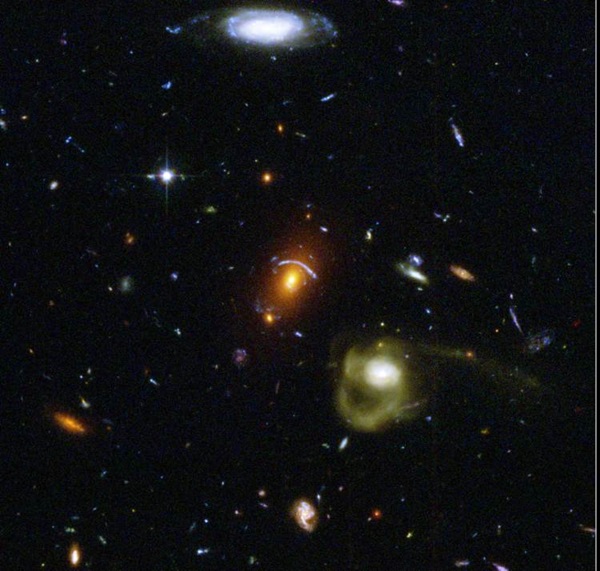Key Takeaways:
In September 2003, Hubble’s infrared camera was busy imaging a galaxy-rich area. Killing time, the space telescope’s Advanced Camera for Surveys took some time to capture a wide, assorted mix of galaxies.
The galactic hodgepodge, includes a green-yellow spiral whose arms were likely expanded by a collision (lower right), a blue stellar nursery (top), and a scattering of smaller, red galaxies.
An optical illusion rests in this image – a blue arc resting above the center galaxy. This bow is actually a galaxy that has been tricked into this shape by gravitational lensing – when light from a distant object is manipulated and stretched by the mass of an intervening object.
Estimated to be 10 billion light-years away, this bluish galaxy is intervened by the red elliptical galaxy, located closer to Earth at 6-million light-years away.
Gravitational lensing isn’t an uncommon phenomenon. Galaxies often encumber light traveling from other galaxies. While a distant galaxy’s light will travel through another, if that blocking galaxy is massive enough, its gravity will bend and distort the light. This is especially common in clusters like this image because of the immense concentrations of mass.










